A recent YouGov poll finds that two-thirds of Americans (66%) use streaming video services, compared to less than half (44%) who say they have a cable-TV subscription. Adults under 30 (28%) are half as likely to subscribe to cable as people 65 and older (63%). However, these two age groups are equally likely to use streaming.
Most TV watchers agree that the rise of streaming has brought about changes in the type of video content that is produced and how it is consumed. A majority of TV watchers say that each of the following is true compared to 15 years ago:
- The variety of TV content available has increased
- TV today features more diverse stories and casts
- TV contains more morally complex characters
- TV includes more content in foreign languages
One in four Americans who use streaming services (25%) say they share their streaming password with someone outside of their home, and the same share say they use someone else’s streaming password. Adults under 45 (42%) who use streaming services are more than three times as likely to say they share a streaming password with others compared to people 45 and older (10%). Younger people are also more likely to say they use someone else’s streaming password. Americans who use streaming are divided on whether it’s OK to share your streaming password with people outside your household (45% say yes, 35% say no). Younger people are more approving of the practice of sharing passwords than older people.
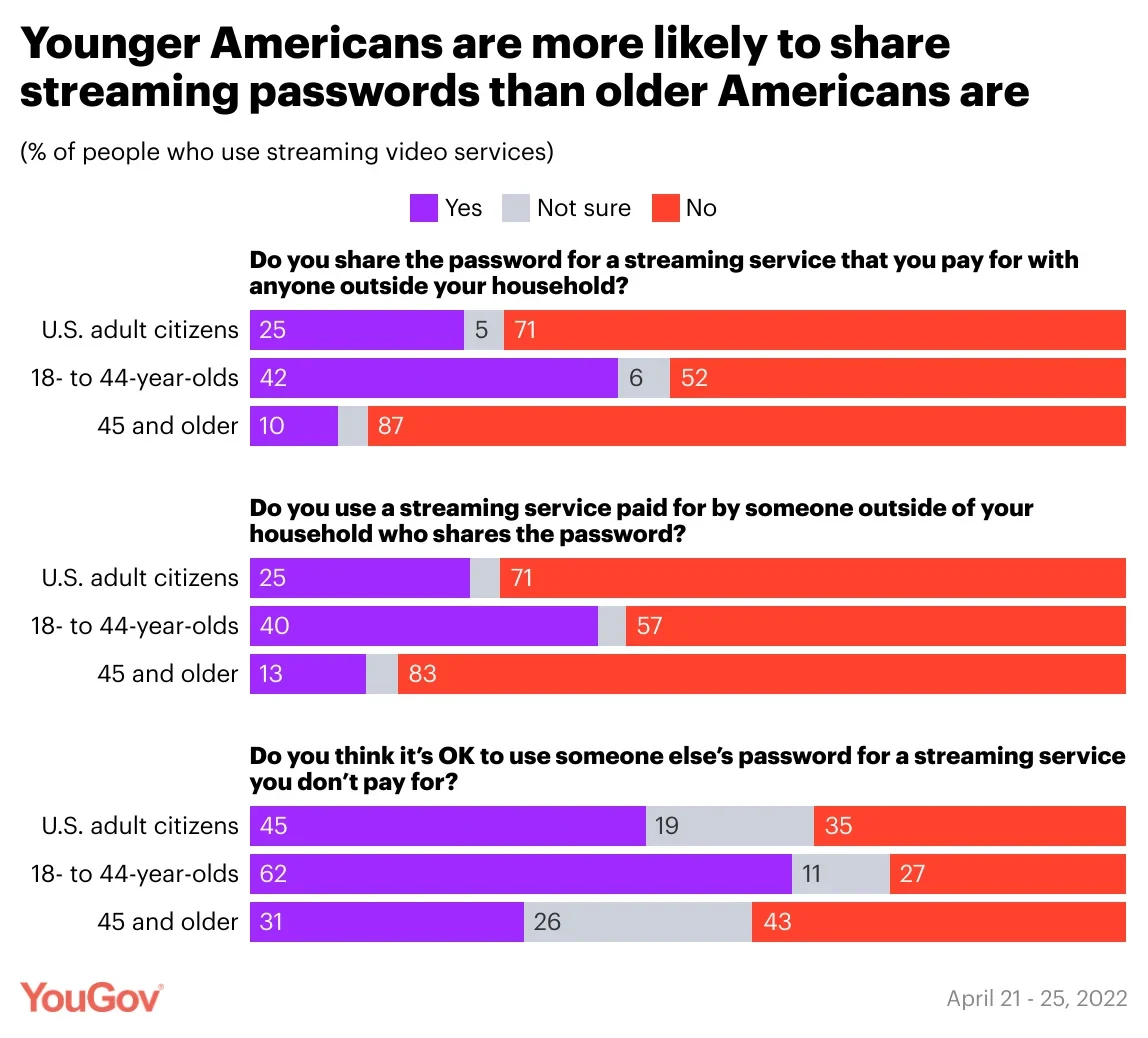
In an open-ended question, we asked American TV viewers how streaming has affected the way we watch TV. Many said that streaming has allowed people to watch TV on demand, whenever and wherever they want. This includes the ability to binge shows by watching multiple episodes in one sitting. Others mentioned that streaming services use algorithms to customize viewing recommendations. Some said that streaming has unbundled the channels included in cable subscriptions, allowing viewers to pick and choose which services to subscribe to. At least one person mentioned that streaming platforms require users to make more decisions about what to watch, framing it as a downside relative to the more-passive viewing experience created by what’s often called linear TV: what’s on now is what you can watch.
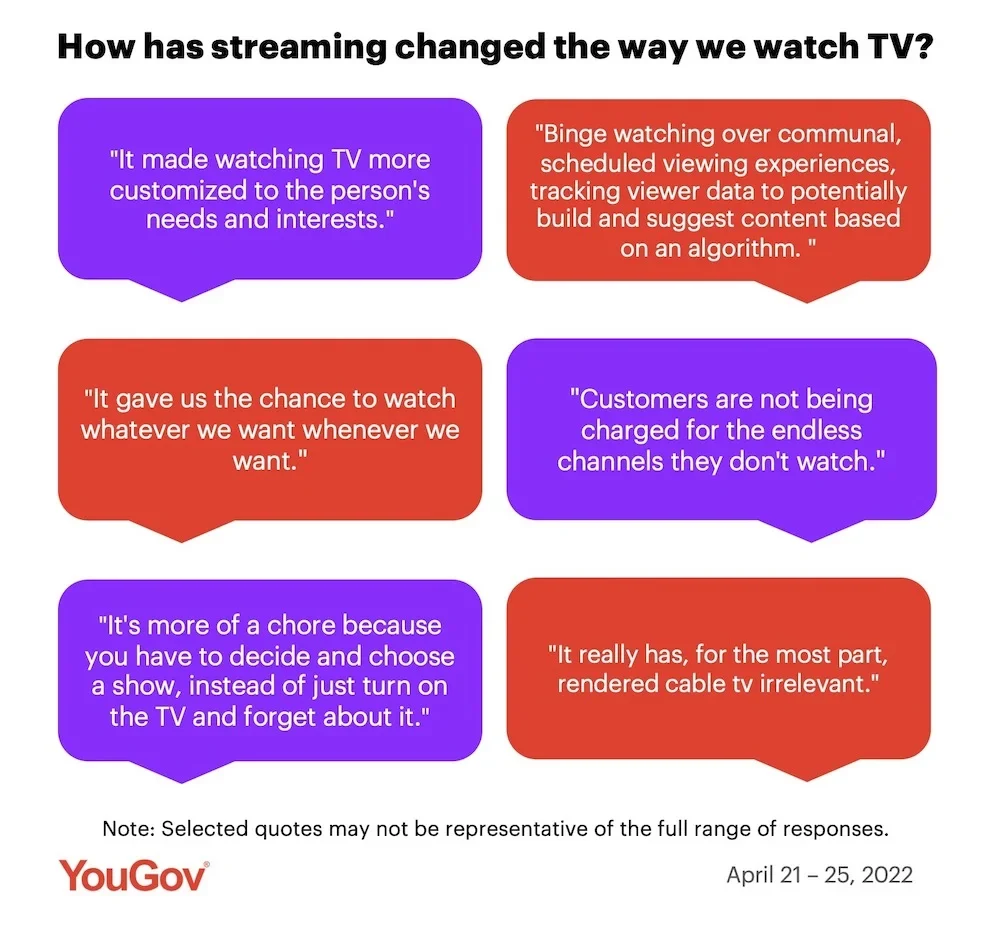
In another open-ended question, we asked American television viewers how streaming has changed the type of content that is produced for TV. Many people said that streaming has improved the quality of TV shows and enabled more diverse and intricate storytelling. Another common theme across responses was the idea that streaming has increased the availability of explicit content. While some people appeared pleased with this change, others lamented that content has become less family-friendly.
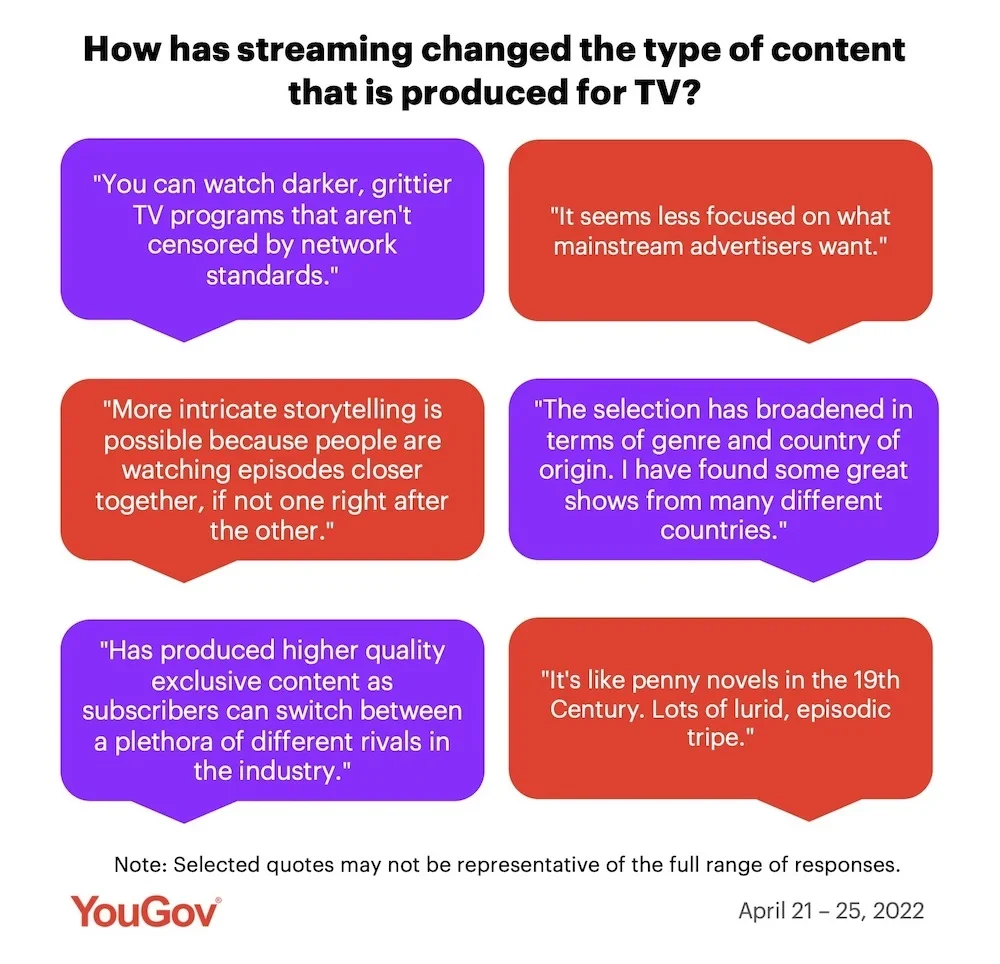
In a separate set of questions, we asked American TV viewers their opinions on many of the changes that were mentioned in the open-end questions. The vast majority of people (71%) say they agree that the emergence of streaming has increased the number of different types of TV shows that are produced, while 16% disagree with this. A little more than half of TV watchers (53%) agree that the emergence of streaming has made TV watching less of a communal activity, while about one-quarter (24%) disagree with this. (While there are drawbacks to agree/disagree-style questions, they can be useful for comparing attitudes across different questions.)
More American TV watchers say that compared to 15 years ago, TV shows today are more likely to fit each of the following than to say they are less likely to:
- Contain nudity or violence (65% more likely, 10% less likely)
- Feature diverse stories and casts (65%, 9%)
- Contain offensive content (61%, 11%)
- Be created for niche audiences (53%, 11%)
- Contain morally complex characters (53%, 13%)
- Contain foreign languages (51%, 10%)
- Be produced in foreign countries (47%, 11%)
Older Americans are more likely than younger Americans to say shows today contain more offensive content, nudity, and violence than they did 15 years ago. Republicans also are more likely than Democrats to say this.
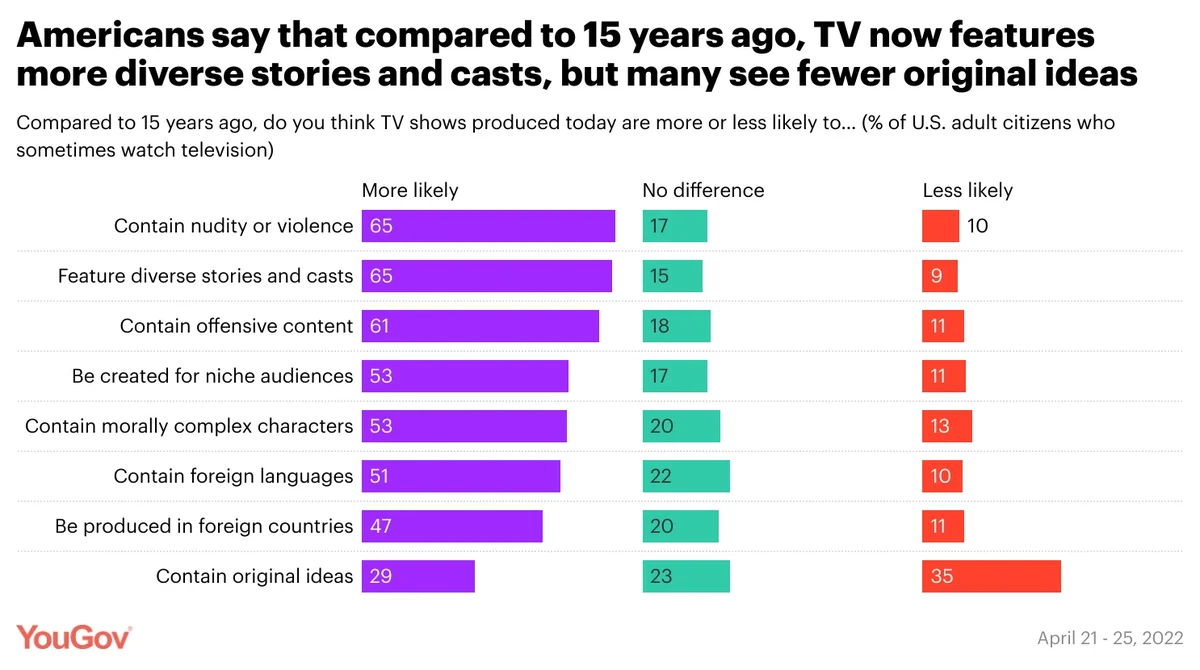
Even though most TV watchers say that TV has become more diverse and is more likely to cater to niche audiences than in the past, a larger share say that TV shows are now less likely to contain original ideas (35%) than say they are more likely to contain them (29%). Democrats are twice as likely as Republicans to say that shows today contain more original ideas than in the past.
Americans who use streaming services are generally satisfied with the personalized show recommendations those platforms make to them: 11% say they’re very satisfied, 47% say they’re somewhat satisfied, 18% say they’re somewhat dissatisfied, and 8% say they’re very dissatisfied. Black Americans are twice as likely as white Americans to say they are very satisfied with the recommendations made to them. Democrats are more likely than Republicans to be satisfied, as well.
Most people who stream TV are also satisfied with the interface design and usability of the services they use: 23% say they’re very satisfied, 49% say they’re somewhat satisfied, 11% say they’re somewhat dissatisfied, and 6% say they’re very dissatisfied.
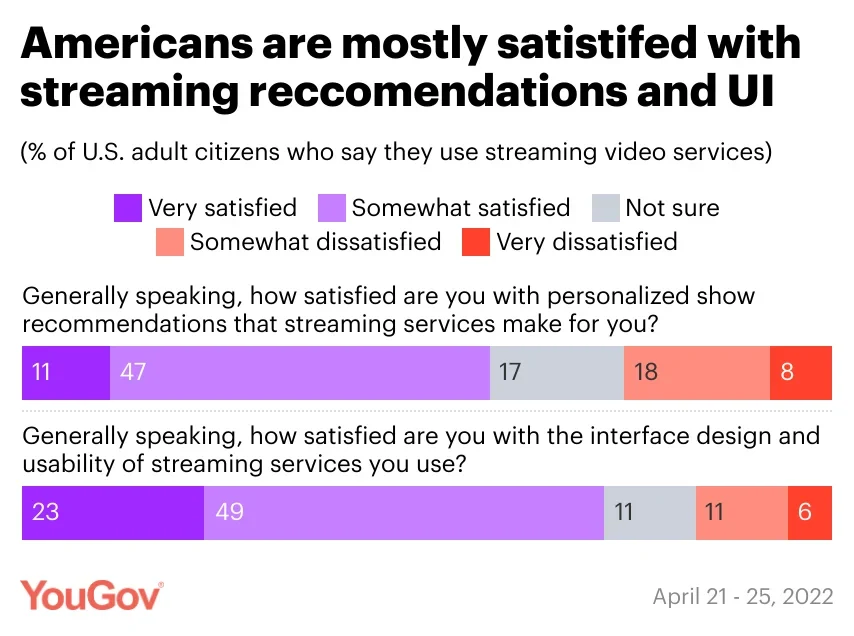
— Carl Bialik contributed to this article
Related: How do Americans like their TV? All at once and in hour-long episodes
This poll was conducted on April 21 - 25, 2022, among 1,000 U.S. adult citizens. Explore more on the methodology and data for this poll.
Image: Mollie Sivaram on Unsplash













